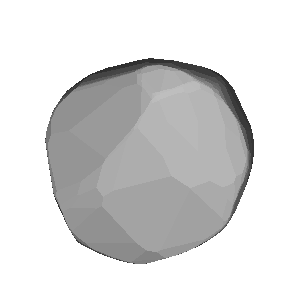2019-09-09 / 4UC 454-000904 / (171) Ophelia
| # | OBS | Observer | Occ | Meth. | Instr. | CC | TSRC | UT1 | UT2 | UT3 | UT4 | UT2E | UT3E | Dur. | Chrd |
|---|---|---|---|---|---|---|---|---|---|---|---|---|---|---|---|
| 1 | show | Henk De Groot | O+ | VID | M356 | NL | GPS++ | 22:47:53 | 22:49:58.20 | 22:50:08.56 | 22:52:11 | 0.03 | 0.03 | 10.36 | 128.5 |
| 2 | show | Jan-Maarten Winkel | O+ | VID | M310 | NL | GPS++ | 22:48:52 | 22:49:56.39 | 22:50:05.79 | 22:50:52 | 0.33 | 0.33 | 9.40 | 116.6 |
| 3 | show | W. Nobel et al | O+ | VID | M460 | NL | GPS++ | 22:42:00 | 22:50:01.77 | 22:50:09.45 | 22:56:00 | 0.32 | 0.32 | 7.68 | 95.2 |
| 4 | show | Roland Boninsegna | O- | VID | M400 | BE | 22:47:18 | 22:53:09 | |||||||
| 5 | show | O. Schreurs et al | O- | VID | M406 | BE | 22:48:56 | 22:51:07 |
5 observations found in db: euraster
Available (probably) matching predictions (click on the link to switch):| JPL#141 : 3718376f-6060-4120-8adb-1807ea03020a [db: observed] |
Using prediction 3718376f-6060-4120-8adb-1807ea03020a for map and profile fit
| Ellipse and circular profile fits to the timings (chords) |
|---|
|
|
Auto-Fit Result: Size = 143 x 86 km a',b' = 71.5, 42.9 km X0,Y0 = 2389.6, 17.2 km Mean diameter = 111 km From 3 chords (VID) You can enter space separated chord numbers (example: 11 4 8) or a method like VIS to ignore all visual timings, or a time source like RAD and NTP (but not GPS). If the plot disappears, then there are less than 2 chords left (too much ignored, go back with browser). Check SiMDA for size and mass data. Check Johnston Archive for satellites. |
Sky projection (artificial light) for occ. time: 2019-09-09, 22:48 UT (JD = 2458736.450)
| DAMIT | Q | P (h) | λ, β | JD0 | JD-JD0 | φ0 | Version | Modified | Vol-equiv D | Cmnt |
|---|---|---|---|---|---|---|---|---|---|---|
| # 1169 | None | 6.665 | 144°, 29° | 2.443159e6 | 15577.5 | 0.0° | None | None | not scaled | 2016-01-04 |
| # 1170 | None | 6.665 | 329°, 23° | 2.443159e6 | 15577.5 | 0.0° | None | None | not scaled | 2016-01-04 |


Image size: 300px. Transparent image background for copy & paste
| Map with groundtrack and observer stations |
|---|
| Event Details |
|---|
Occultation UUID [and DB] : 3718376f-6060-4120-8adb-1807ea03020a [observed] Occultation Date + Time : 2019-09-09 at 22:50:22 UT +/- 0.01 min [1] Object Designation : (171) Ophelia Orbit Class : MBA Star Designation : GDR3 2543319142649120128 Star Coordinates (ICRF) : RA = 00 41 17.7546, DE = +00 40 10.512 [2] Star Magnitudes : G = 12.0 mag, RP = 11.54 mag, BP = 12.29 mag Object Magnitude : V = 13.91 mag Estimated Magnitude Drop : 2.1 mag Estimated Max. Duration : 9.4 sec Object Mean Diameter : 117 km (src: astorb) Speed of the shadow : 12.4 km/s Elongation to Moon & Sun : 69° (sunlit = 85%), Sun = 157° Cross-track uncertainty : 2.3 mas = 4 km = 0.04 path-width (1-sig) RUWE and duplicate source : 1.53 mas, dup.src = 0 (0:false, 1:true) Ephemeris Reference : JPL#141 Object is a Gaia mass determination target ! [1] time t0 of closest geocentric approach c/a, [2] including proper motion until t0 |
| More Data and Informations |
|---|
(If error 404: link not valid which means no data available)
| Aladin Sky Atlas |
|---|
| Aladin Lite direct link (has Gaia overlay) |